Top speed 920 km/h Length 12 m First flight July 17, 1978 | Wingspan 9.88 m Introduced 1983 | |
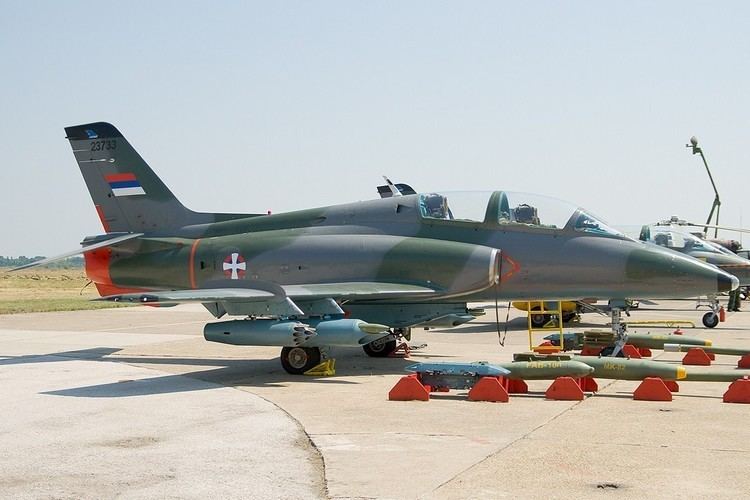 | ||
Manufacturers SOKO, Utva Aviation Industry | ||
The Soko G-4 Super Galeb (English: Super Seagull), also referred to as N-62, is a Yugoslav single-engine, advanced jet trainer and light ground-attack aircraft. The G-4 was designed by the Aeronautical Technical Institute at Žarkovo and manufactured by the SOKO aircraft factory in Mostar as a replacement for the Soko G-2 Galeb in service with the Yugoslav Air Force (Serbo-Croatian: Ratno vazduhoplovstvo i protivvazdušna odbrana – RV i PVO). Production started in 1984 and lasted until the breakup of Yugoslavia in 1991. A total of 85 aircraft were built, six of which were exported to Myanmar.
Contents
- Design and development
- Variants
- Operators
- Former operators
- Notable accidents
- Specifications G 4M
- Aircraft on display
- References
During the Yugoslav Wars, RV i PVO G-4s carried out ground-attack sorties, with four being lost to enemy air defences. In 1992 the remaining aircraft were relocated to Serbia and Montenegro where they entered service with the Air Force of the new FR Yugoslavia. A single G-4 was left over to the Republika Srpska Air Force.
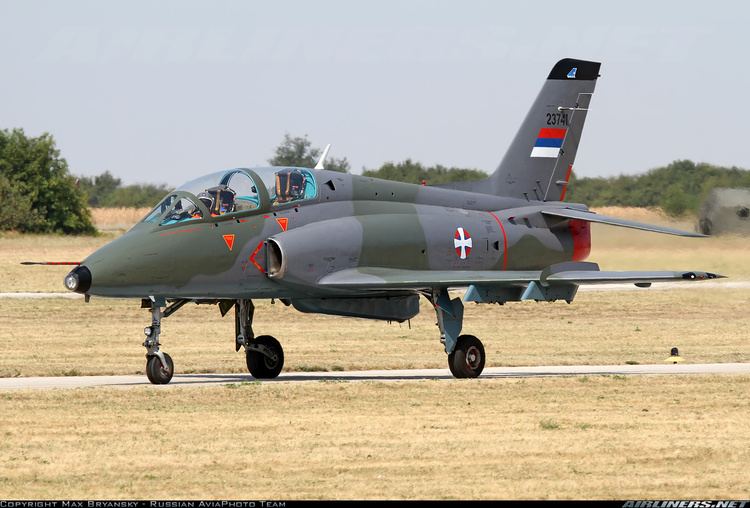
Design and development
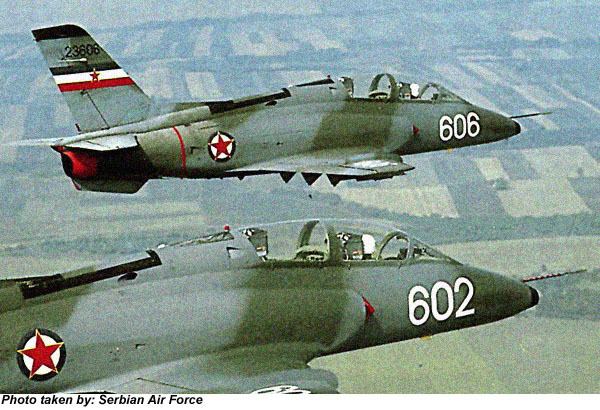
The G-4 Super Galeb was developed as a replacement for the G-2 Galeb, which had been the most commonly used jet trainer aircraft of the Yugoslav Air Force up until 1990. The first of two prototypes was completed by early 1978. Following completion of the initial testing phase, the first flight was achieved on 17 July 1978 and the first of six pre-production aircraft on 17 December 1980. These and the first prototype were designated G-4 PPP, and had fixed tailplanes with inset elevators and no anhedral. Production examples (and the second prototype) were designated G-4 and featured an all-moving anhedral tailplane and comprehensive avionics improvements. The G-4 first flew in 1983 and has been ordered in large numbers for the Yugoslav Air Force.

The G-4 features a low wing monoplane design with slightly tapered wings. The aircraft is 12.25m long and 4.3m high, with a wingspan of 9.88m. It weighs 3,250 kg when empty and can carry 1,882 kg of fuel. The aircraft is fitted with a short nose cone, rounded fuselage, conventional empennage, semicircular air intakes, vertical tailfins, rudder, ailerons, horizontal stabilisers and fuel tanks at the square tips. The G-4 its performance is considerably improved by the introduction of a more powerful version of the Rolls-Royce Viper 632-46 turbojet. The cockpit is fitted with two ejection seats with the rear seat slightly elevated to render all round clear visibility.
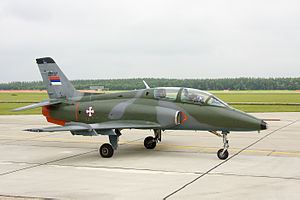
The G-4 saw some combat during the Yugoslav Wars. In total, three G-4s were shot down, all pilots ejecting safely. During the NATO bombing of Yugoslavia, seven G-4s of the Leteće zvezde aerobatics team were destroyed at Golubovci Air Base.
Variants
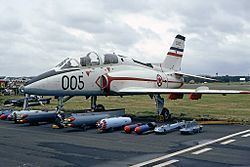
Operators
Former operators
Notable accidents
Specifications (G-4M)
Data from Jane's All The World's Aircraft 1993-94
General characteristics
Performance
Armament
Avionics
Standard communication and navigation equipment, plus (fire control and weapons management) Ferranti ISIS D-282 gyro sight, and (defensive sensors and systems) Iskra SD-1 RWR; there is also provision for a reconnaissance pod with cameras and an IR line scanner.
